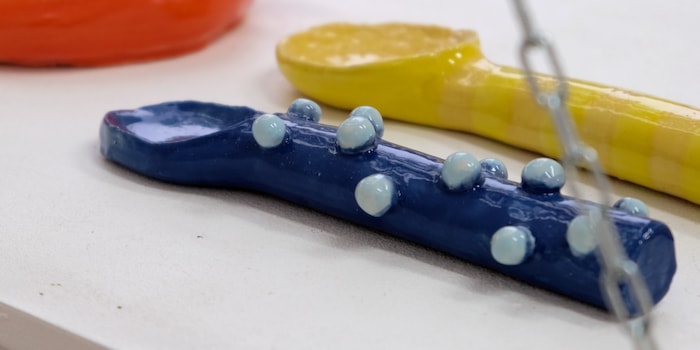
Strange products you didn't know you wanted soon - Part 3
Mobile greenhouses, plasticine chairs and lollipop spoons: the design objects on display at the last Dutch Design Week were so bizarre that I had to look twice to recognise them.
At the beginning of this year, the Pinterest platform predicted that weirdcore would be a megatrend in 2023 based on users' search queries, and it was right. Whether at Salone del Mobile in April or this year's Dutch Design Week (DDW) in October in the Dutch city of Eindhoven, designers are turning even the most banal objects into art and making them more fun. Although this sometimes looks a little funny, there are serious thoughts behind it. See for yourself.
1. mobile greenhouses
A pram is actually designed to carry babies and small children around. Not so with the final project by Janneke de Lange. The mobile greenhouse "The Nursery" transports plants from A to B and is intended to encourage people to look after plants as if they were children. Because the Design Academy Eindhoven (DAE) bachelor's graduate has been fascinated by greenhouses of all kinds since her childhood, she dreams of setting up a botanical garden for tropical fruits in the Netherlands. To realise this vision, however, more trees are needed - and people who are willing to care for them. "If we care for young plants in the same way as babies, it creates a deeper connection with nature," says Janneke.
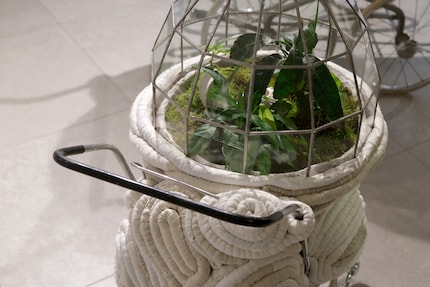
Source: Pia Seidel
2. half-finished
Beauty can be found in unexpected places, even in mass-produced industrial components, finds Vincent Decat. For his DAE final project "Semi-made", the designer has created a series of sculptural lamps and furniture made up of individual parts such as bicycle clamps, pneumatic connections, tap connections or brake discs. Like the French-American object artist Marcel Duchamp, Vincent Decat takes the components out of their original context so that they appear abstract to the viewer. This is intended to bring out their often overlooked visual qualities.
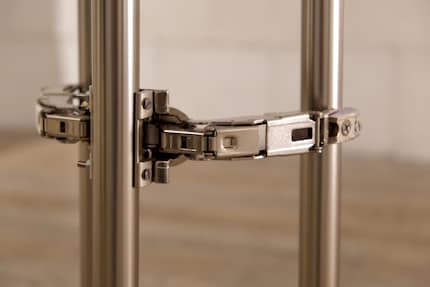
Source: Pia Seidel
3. the somewhat different fishing tools
For a long time, fishing was only used to procure food, until it developed into a popular sport. To make it more exciting, DAE Bachelor graduate Carys Higgins has designed fishing tools called "Gone Fishing". What makes them special: They were made using techniques from four increasingly rare crafts - making chain mail, wooden fishing nets, fabric folds and glass eyes. In this way, the project aims to draw attention to this dying craft.
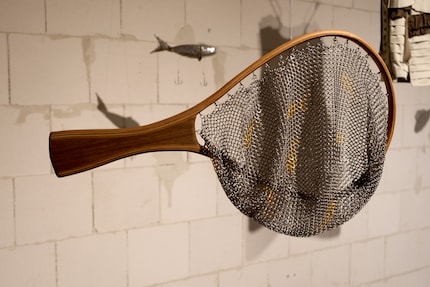
Source: Pia Seidel
4. impractical cutlery
Why keep it simple when you can make it complicated? That's what designer Morgan Steyaert thought. For the "Dream Cakes" exhibition, which was dedicated to the pure joy of eating, she created a collection of cutlery. Each spoon is unwieldy in its own way. Either lumps interfere with holding or crooked shapes make eating difficult. "My collection of impractical spoons is intended to emphasise the joy of eating together through their shapes and colours," says Morgan Steyaert. She likes the fact that the impracticality slows down the act of eating and allows the handmade objects to be perceived more consciously.

Source: Pia Seidel
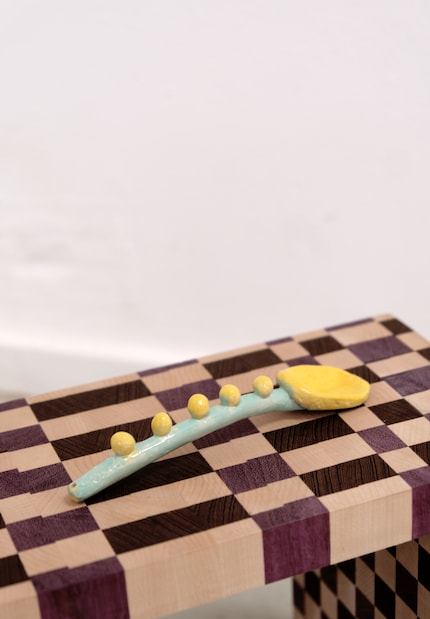
Source: Pia Seidel
5. chairs made from modelling clay
The "Hippo Chair" by French-based designer Diego Faivre is inspired by a hippopotamus, but weighs about as much as a pelican. It is made of "Diego Dough", a special version of Play-Doh modelling clay, and is part of the "Minute Manufacture" project. With this project, the artist draws attention to the fact that time is money. "Every minute of my production time costs one euro," he says. "The Hippo chair costs 1462 because it was made in 1462 minutes." Its final price therefore reflects the time invested in its production.
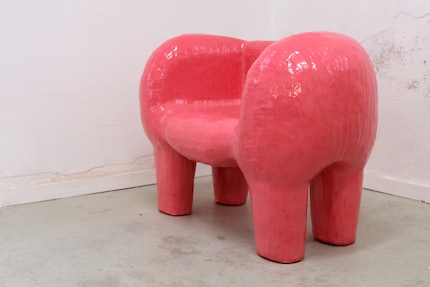
Source: Pia Seidel
6. soft and hollow watches
The Soft series by designer Kiki van Eijk is not new, but I came across it for the first time at DDW. It consists of clocks that look as if they are made of fabric. In reality, however, they are made of ceramic. The trompe-l'œil effect makes the watches eye-catching and museum-worthy. So it's no surprise that they are also represented in international museum collections.
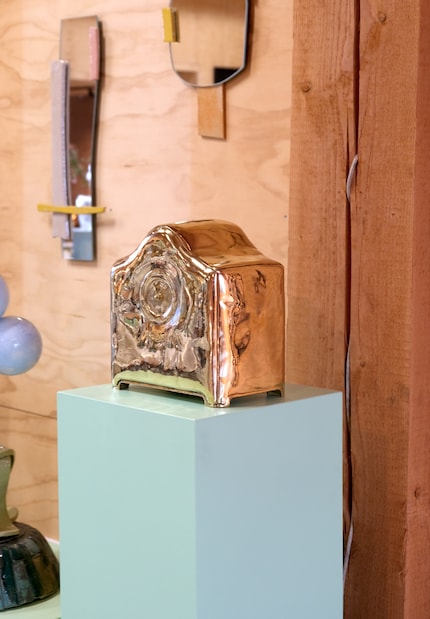
Source: Pia Seidel
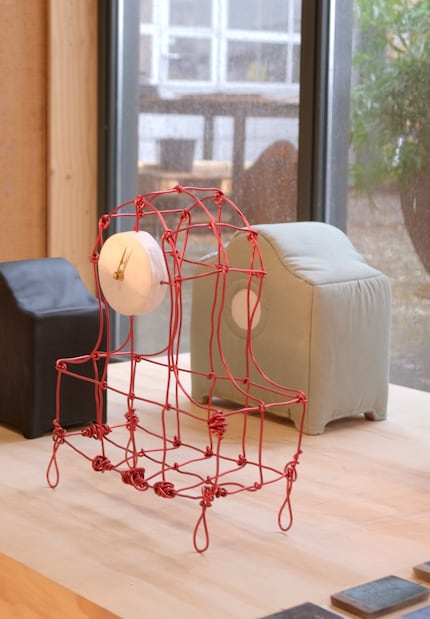
Source: Pia Seidel
7th permanent lollipop
At first I thought the coffee and teaspoons from Fleur Peters were lollipops, but these lollipops last forever. They are made from glass and leftover pieces that accumulate in the Dutch product designer's workshop. That's why no two spoons are the same.
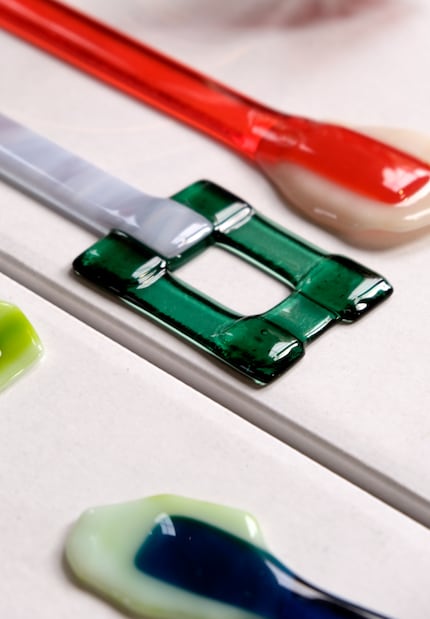
Source: Pia Seidel

Source: Pia Seidel
8. woollen sausages
For the "Completing the Grid" project, Léo Nunes Almeida has developed a methodology for entering the flow state while knitting. "This is a state of total immersion in which you are completely present, lose track of time and find joy and satisfaction," says the designer. This can increase well-being and productivity and reduce stress. Although the designer prioritised the process, a product was created in the process: A hanging room divider made up of individual, sausage-shaped cushions with a knitted cover.
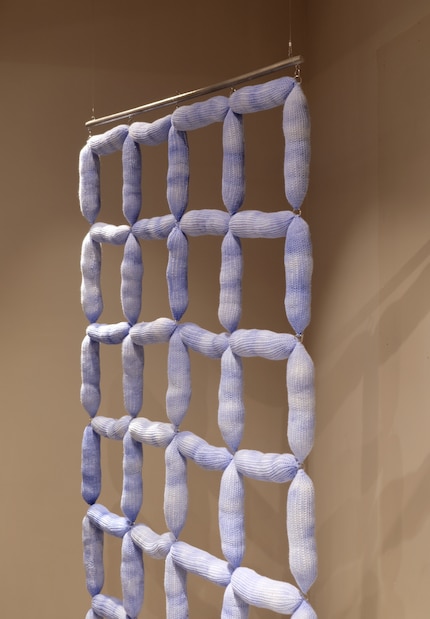
Source: Pia Seidel
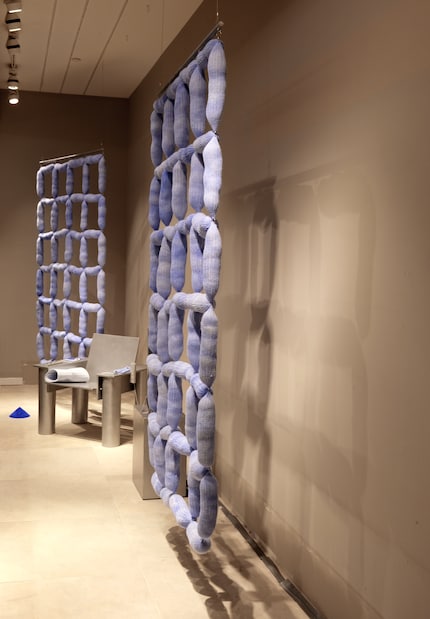
Source: Pia Seidel
9. fluffy friends
New works by Alfhild Sarah Külper were also on show at DDW. Including a pink-coloured mirror that is almost no longer a mirror. It has been almost completely covered with small carpets. The Swedish textile artist designs elaborate carpet creations as an antidote to our fast-paced digital world. Because she spends hours finishing a piece like this, she has a personal connection to each one. That's why she calls her creations "Fuzzy Friends". "The gentle term is meant to make you smile and remind you of the softness of the rugs and my gentle approach to nature," she says.
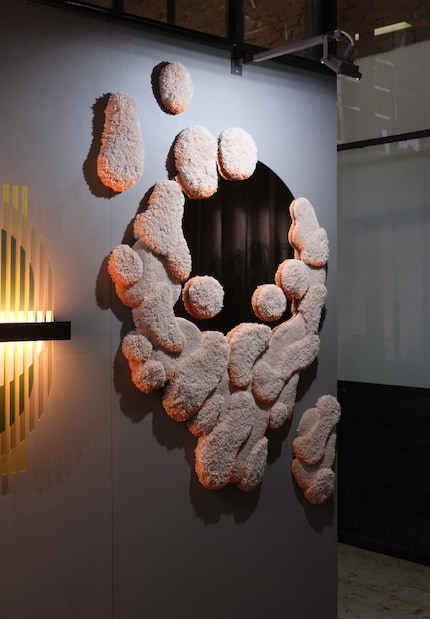
Source: Pia Seidel
Like a cheerleader, I love celebrating good design and bringing you closer to everything furniture- and interior design- related. I regularly curate simple yet sophisticated interior ideas, report on trends and interview creative minds about their work.